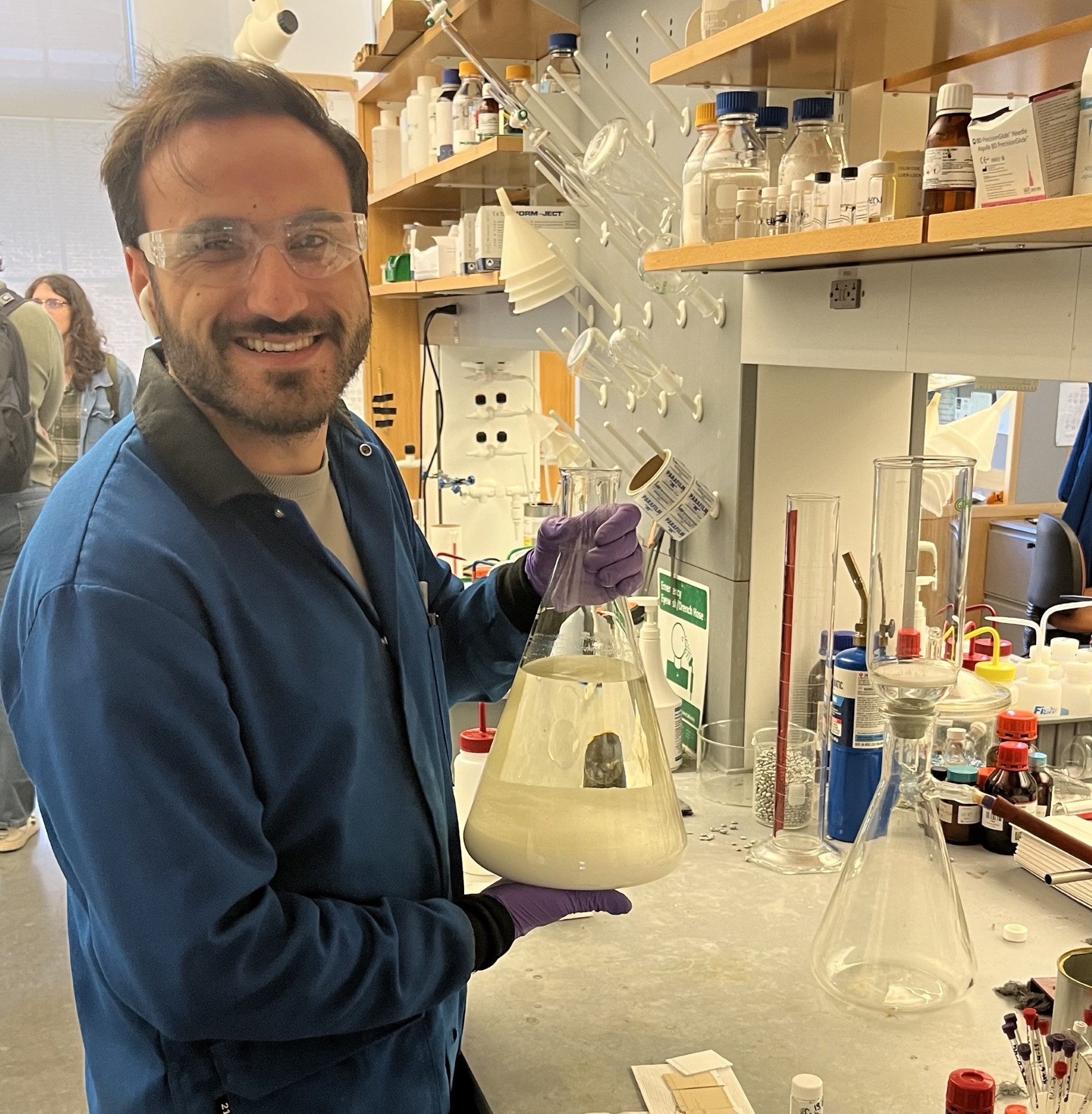Light-Powered Technique Accelerates Synthesis of Medicinal Plant Compounds

Previously, chemists needed anywhere from 12 to 22 separate steps to assemble Stemoamide alkaloid compounds. A method developed by Nicholas Akkawi and David Nicewicz trimmed that process to just a handful of well-orchestrated photochemical steps, the shortest known syntheses of these compounds to date.

May 12, 2025 I By Dave DeFusco
A new light-driven method developed by two UNC chemists dramatically simplifies and accelerates the synthesis of stemoamide alkaloids—a class of bioactive compounds found in plants—demonstrating how photochemistry can streamline the production of complex natural medicines, opening new possibilities for drug discovery and development.
Dr. Nicholas Akkawi, who holds a Ph.D. in organic chemistry, and Dr. David Nicewicz, William R. Kenan, Jr. Distinguished Professor of Chemistry, discuss the findings of their research in the study, “Photochemically Enabled Total Syntheses of Stemoamide Alkaloids,” in the Journal of the American Chemical Society.
“We wanted to show that photochemical reactions could do more than just one step here and there,” said Akkawi, lead author of the study. “We designed an entire strategy that relies on light to build these intricate molecules from the ground up, in fewer steps and under much milder conditions than ever before.”
Stemoamide alkaloids are naturally occurring compounds found in the Stemona family of plants, which have been used in traditional medicine for centuries. Known for their cough-suppressing—antitussive—and insecticidal properties, these compounds are challenging to produce in the lab due to their unusual and compact ring structures—three of them, to be exact, tightly fused together like interlocked puzzle pieces.

Previously, chemists needed anywhere from 12 to 22 separate steps to assemble these compounds. Akkawi and Nicewicz’s method trimmed that process to just a handful of well-orchestrated photochemical steps, the shortest known syntheses of these compounds to date.
“This is not just about making one molecule faster,” said Nicewicz, senior author of the study. “It’s about opening a door to how we think about building complex molecules with precision and efficiency. Light is the key.”
At the heart of their approach is a type of reaction called photoredox catalysis. This process uses light to excite a special catalyst—in this case, an acridinium dye—into an energetic state where it can either donate or accept electrons. That power is used to generate radicals, highly reactive molecules that can build chemical bonds in ways traditional methods cannot.
Akkawi and Nicewicz use these radicals in an elegant reaction called a polar radical crossover cycloaddition (PRCC), which helped them form the tetrahydrofuran ring, a key building block of the stemoamide core. They further manipulated the resulting structures using more light-driven reactions to form a unique oxaspirocyclic butanolide, a rare and complex feature found in these natural products.
“These radical reactions let us jump over roadblocks that usually slow down synthesis,” said Akkawi. “Instead of carefully adding piece after piece, we can form multiple bonds in one go, often under room temperature and with simple reagents.”
One challenge the team faced was that pyrroles, a nitrogen-containing structure common in stemoamides, didn’t behave well in early stages of the reaction. As a result, they used a clever workaround—building a pyridine version of the molecule that was more reactive under light conditions. Later, they chemically reshaped it back into a pyrrole, much like putting on a disguise for part of the journey and then taking it off.
“This was one of our more creative moves,” said Akkawi. “We realized we couldn’t get the molecule we wanted if we started with the real thing. So we made a ‘fake’ version that played nice in the reaction and only later transformed it into the real thing.”
The beauty of this work lies not only in the chemistry but in what it suggests for the future. By showing that multiple light-driven reactions can be strung together as the main strategy, not just as side tricks, Nicewicz’s lab is paving the way for faster, cheaper and greener ways to produce complex molecules, including drugs.
This approach could be especially useful for creating rare natural products in the lab, particularly those with medicinal value but hard-to-source plant origins. It could also inspire new designs in drug discovery, agriculture and materials science.
“This is a paradigm shift,” said Nicewicz. “Chemists often use photochemistry for a cool transformation here or there. But what Nick has shown is that we can think in a fully photochemical mindset. That means less waste, fewer toxic reagents and more sustainable processes.”

